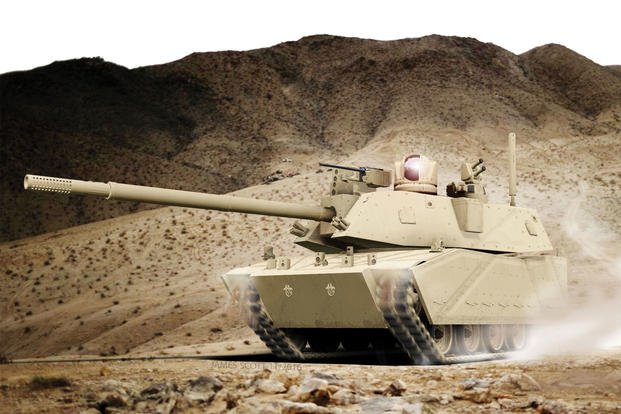The Army's replacement for the Cold-War era Bradley fighting vehicle will likely field a main armament that's far more potent than the Bradley's 25 millimeter cannon.
Current combat vehicles owned by peer competitors include the Russian BMP3, which features a 100 mm main gun. And "104 countries have the 30 mm," said Brig. Gen. Ross Coffman, director of the Next Generation Combat Vehicle Cross-Functional Team.
"If we want next-generation, I personally do not want to modernize to parity; it makes no sense," Coffman told an audience last week at the 2018 Association of the United States Army's Annual Meeting and Exposition. "We must modernize to establish standoff; our soldiers deserve standoff."
The Army has prioritized replacing its Bradley Fighting Vehicle and hopes to field the first unit with the Optionally Manned Combat Vehicle beginning in 2025, Coffman said, adding that the replacement for the M1 Abrams will come in "distant years."
"The M1 tank still has a lot of upgrades that it is capable of putting on board, but the Bradley is at [the end of] its life," Coffman said. "The bottom line is, anything is on the table. We want industry feedback for decisive lethality; if that is run by a flux capacitor, hovers and has a ray gun, and we can make that work at a reasonable cost, absolutely."
The Army continues to plan industry days to learn from defense firms "what is in the realm of the possible, so we can make a decision on firm requirements moving forward," Coffman said. "The technology may not be there, but we must maintain the ability to upgrade our equipment in a dynamic fashion to always have standoff against our enemy."
Coffman added that experimenting and prototyping, once started, will not end.
"It's a continuous line because, as we field the new vehicles, we want to continue to roll in those technologies that we can afford," he said. "Because, as I said, we cannot modernize to parity, and our potential enemies are going to try to catch up."
Army leaders plan to make a decision in 2023 on whether the service wants to develop a future tank, Coffman said.
"I did not say replace the M1 tank," Coffman said. "What is going to be our decisive lethality platform? That is what is very, very important to us is to have that capability; it doesn't have to be a tank. It just has to be decisive and lethal."
-- Matthew Cox can be reached at matthew.cox@military.com.
















